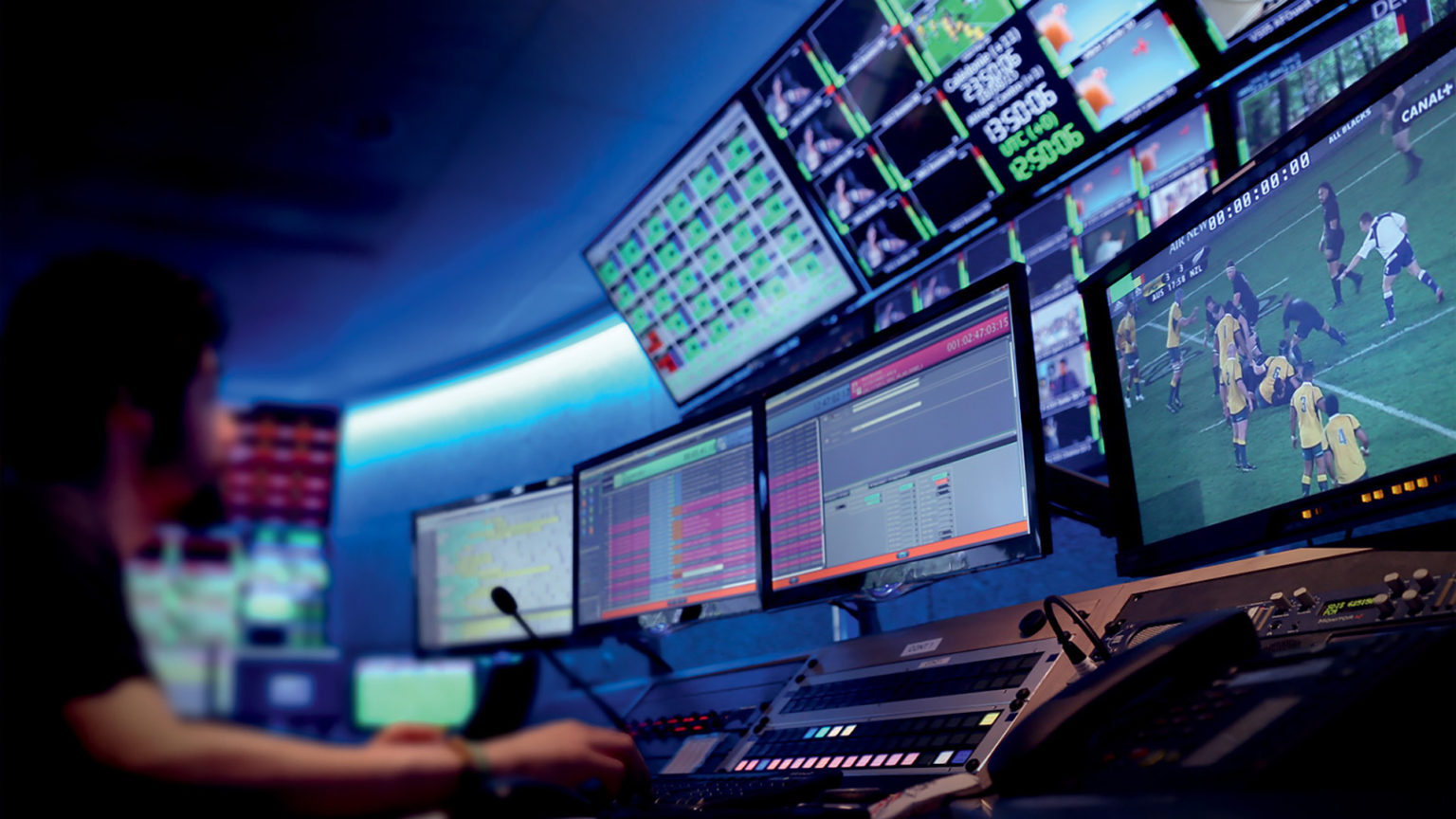Cloud Advances Push Virtualized Playout to the Forefront
The move to remote production has clarified its role

LONDON—Playout has always been a crucial element in the broadcast distribution chain but it is becoming even more so due to changing requirements and technological capabilities.
Broadcast technology developers like to talk in terms of evolution when it comes to advances in equipment and operational practices. The area of broadcasting that has perhaps evolved in the true sense of the word is playout. Over the years it has moved from being based on videotape—initially played out from banks of individual machines and then later automated carousels—within a broadcaster’s headquarters to third party facilities, with the further shift to file and server-based distribution.
That evolution has continued with the advent of the cloud, where files may be located outside the control center, with the most recent advancement being the further shift to remote or from-home working.
While the adoption of virtual techniques were largely foisted on the TV sector due to the Covid outbreak, they were already being used in some circumstances and were only going to become more widespread in the future. The coronavirus, as with so many things, compelled broadcasters to bring their plans for this kind of implementation forward.
Comfort Level
“Generally speaking, media companies are more comfortable following pandemic-forced virtualized workforces with virtualized workflows,” said Rick Young, senior vice president and head of global products at LTN Global. “It feels like the industry jumped three-to-five years ahead in terms of location-agnostic production, playout and media management.”

Pre-pandemic, virtual playout was dominated by channels containing only pre-recorded, non-live programming, according to Young. “That is not the case today, as channel creators are beginning to understand what is possible when mixing live and non-live programs.”
Young adds that audience tastes have also driven a change in how services are organized and presented, with a growing demand for live and more targeted broadcasts. “This evolution is crucial as consumer expectations for FAST [free ad-supported streaming TV] and OTT platforms are trending towards live, regionalized and fresh content, not just a string of re-runs delivered in a linear fashion.”
The professional video industry's #1 source for news, trends and product and tech information. Sign up below.
Mat Shell, head of sales at Pebble, acknowledges that the various lockdowns and resulting shift to working from home increased the need for “secure remote access” to playout systems.
“System implementations obviously had to change,” he says. “The majority of broadcasters are still commissioning bare-metal systems as they contemplate their transitions to more flexible IP-based technologies,” he said. “But, regardless of whether it’s a playout solution deployed on premises or is virtualized or a mixture of both, what has driven the most change is the need to control those systems remotely in a secure way.”
Web-based monitoring and control systems enable broadcasters to run channels either within a traditional transmission control area or from an outside location, which includes other premises or an operator’s home. As for other requirements, Shell says broadcasters are “likely to want their linear channels or playout facility” to feed any OTT platforms they operate.
“They may also wish for linear channels to feature on YouTube, complete with unique branding,” he says. “Broadcasters additionally want the ability for playout systems—both on the ground and virtualized—to cater for pop-up or event channels, specifically for OTT streaming.”
Linear, OTT Commonalities
Streaming services, notably for video-on-demand, were included under the general heading of “broadcast” but there was the impression that more conventional TV organizations with roots in the linear world still viewed their OTT rivals as being in a different category, both in terms of audiences and technology.

These two areas are now much closer together, particularly, observes Martin Whittaker, technical product director for MAM and automation at Evertz, on the technical side.
“Both groups—broadcast and OTT, DTC [Direct to Consumer] and digital applications—want to create playout channels quickly and easily for the lowest cost possible and control/monitor these systems from anywhere,” he said. “This in turn generates the largest possible return on investment. Overall, customers are looking for systems that give them extreme flexibility, agility and adaptability to optimize content monetization for the lowest possible cost.”
While the market is still polarized, Sanjay Duda, chief operating officer at Planetcast Media Services, views the divide as being between big broadcasters with a large number of channels that feel responsible for delivering content and information to their viewers or subscribers; and “decentralized content generators” that distribute minority interest programming for a set period of time.
“As a playout operator, you need to be able to cater to both sides,” he said. “You have the long-term solutions on one side but you also need to have pop-up or niche channels.”
Another element in the playout equation, Duda continues, is the commercial imperative, although this has to be considered in relation to technology.
“There’s a huge push towards how this is monetized, [which could be] by creating multiple feeds from the same playout for various platforms. Those are very important features as are being able to push in any last minute ads. In the U.S., FAST channels are taking the whole place by storm because it’s become a revenue-generating model where you create a stream and deliver it on to Smart TVs.
Because of virtualization, broadcasters and media companies are rapidly moving towards channels without a box, either in data hubs in the machine room, a corporate or shared data center or in the public cloud.”
Phillip Neighbour, Playbox Technology
“It’s ad-supported and the ads are delivered completely through technology,” he added. “Achieving high fill rates is critical to success, but for that, ad insertion technology is not enough. We also need to have good tools that decide which ad to insert for which customer or Smart TV to get the best value for the ads.”
Transparent to the User
At one time this kind of capability would have been delivered by highly sophisticated and complex equipment. Today, says Phillip Neighbour, chief operating officer at PlayBox Technology, broadcasters, content providers and facilities want simplicity, while also benefiting from the latest technologies.
“They expect a high degree of automation, now supported by machine learning and artificial intelligence,” he said. “The whole system, from ingest to playout, has to be controlled from a single, intuitive user interface that tells the operator when an action is needed but which generally handles everything to the planned schedule.”
All playout functionality, Neighbour explains, can now be implemented in software, with modern design principles utilizing microservices that can be combined as necessary to provide the required functionality for a particular channel.
“Channel-in-a-box is not a new concept,” he says, “although with modern software techniques it is extremely efficient and function-rich. Because of virtualization, broadcasters and media companies are rapidly moving towards channels without a box, either in data hubs in the machine room, a corporate or shared data center or in the public cloud.”
After a relatively long and steady progression, playout as a technology area appears to be going through an accelerated evolutionary period right now. Whether that slows or increases in pace appears to depend not only on the ambitions of broadcasters and streaming services but also the viewing habits of their audiences.
Kevin Hilton has been writing about broadcast and new media technology for nearly 40 years. He began his career a radio journalist but moved into magazine writing during the late 1980s, working on the staff of Pro Sound News Europe and Broadcast Systems International. Since going freelance in 1993 he has contributed interviews, reviews and features about television, film, radio and new technology for a wide range of publications.
